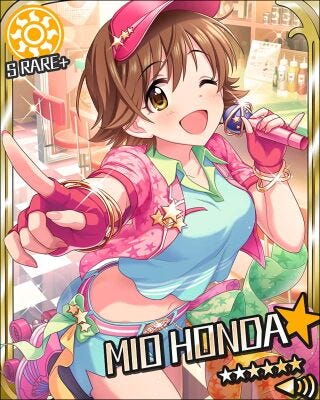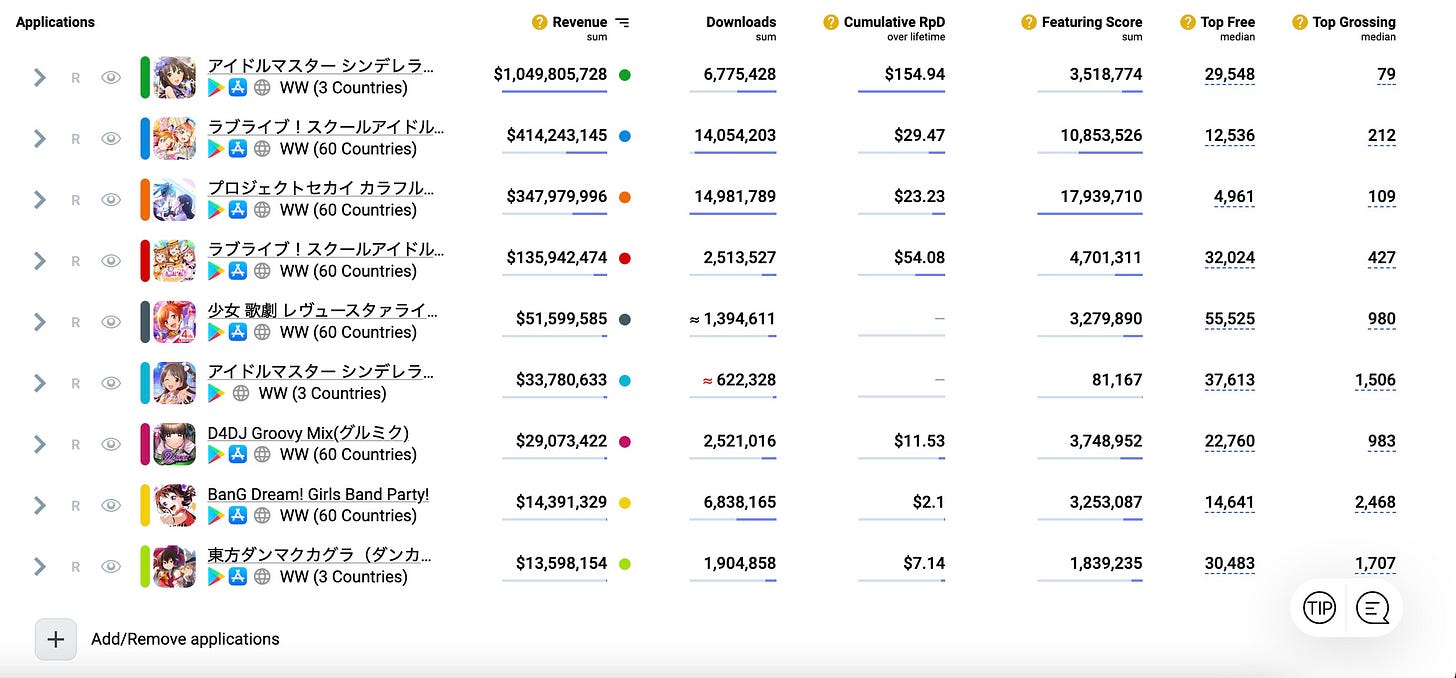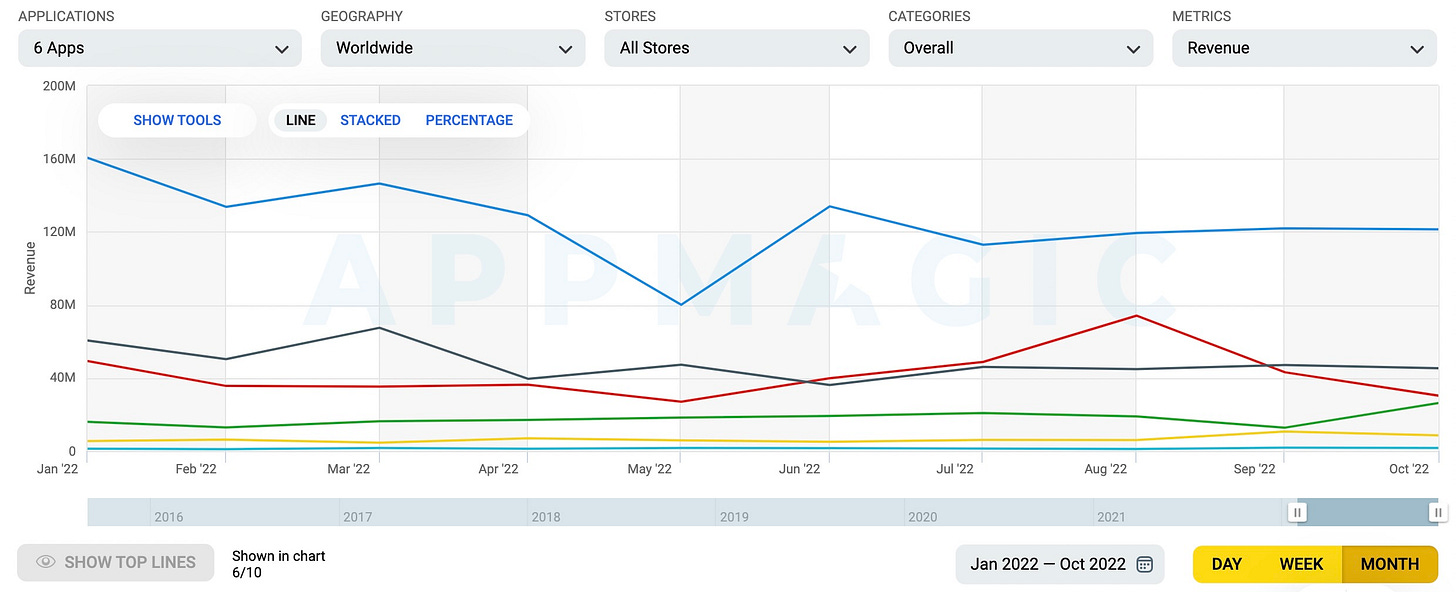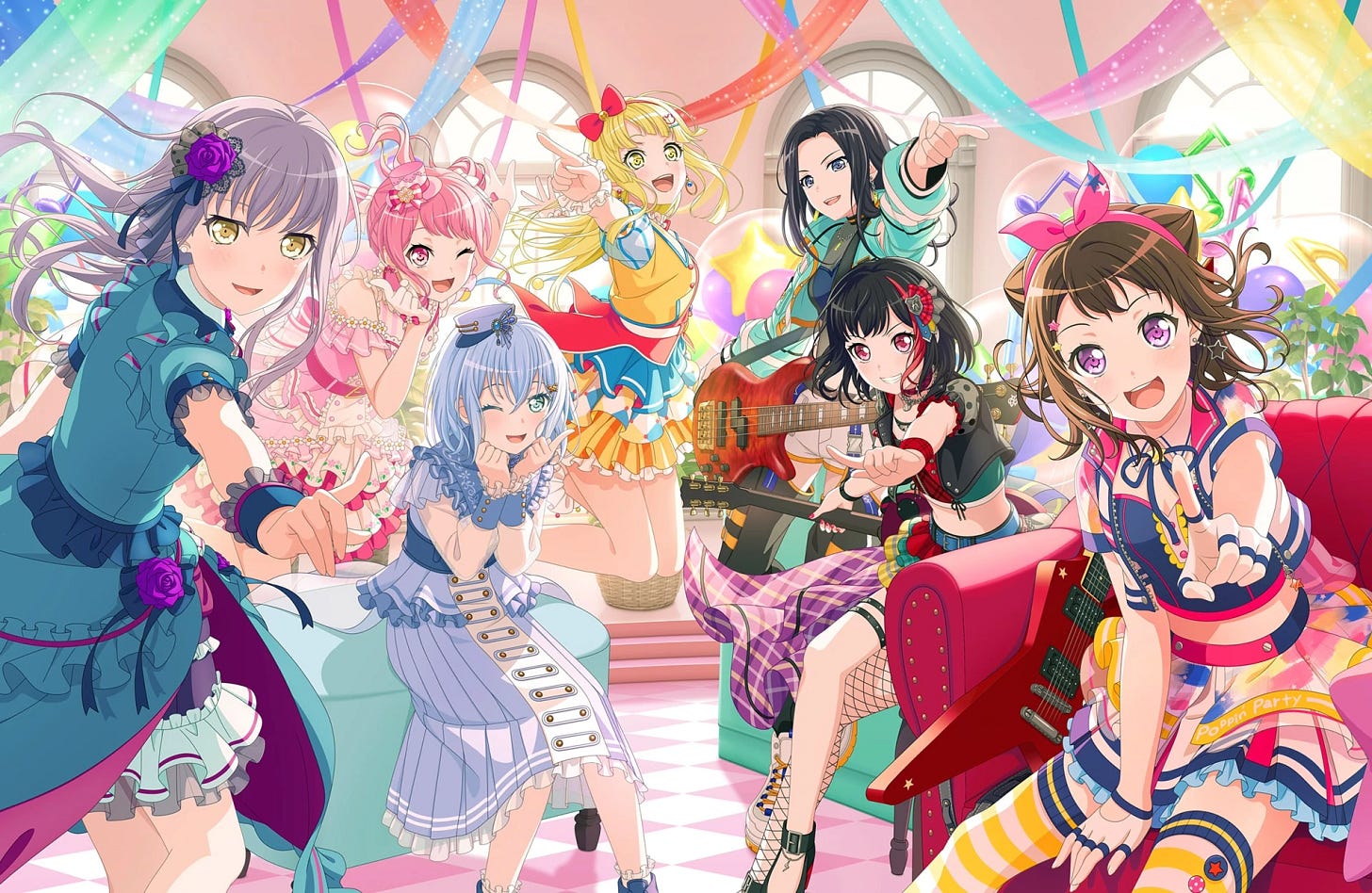GamerBraves Newsletter vol. 66 – The Appeal of Rhythm Gacha Games
Gacha games can often be controversial. Many people aren't fans of the pressure to purchase microtransactions that despite being labeled optional, are often required to get over bosses and further levels in the game's campaign.
That's part of what makes rhythm gacha games so interesting. The rhythm Gacha game subgenre is thriving with games like Love Live School Idol Festival, Bang Dream, D4DJ, and even Hatsune Miku Colourful Stage bringing in fairly big numbers over their lifetimes. All gacha games have different ways to try and get players to spend money of course, but these games often involve playing through music videos and hitting the beat to the notes flying across the screen. This type of gameplay arguably doesn’t require any gacha to beat. So, how do they do it?
The Difference Between RPG and Rhythm Gacha Games
When rolling for gacha in an RPG game like say Fate/ Grand Order, Genshin Impact, or Cookie Run, the potential reward is pretty straightforward: you get a weapon or a character. There’s a possibility to get a new unit that you can use to play the game and potentially make it more fun. They could be a character that is higher tier and therefore easier to use or just some you think is fun to play as. This also applies to new weapons or amounts, the value is that they're something that benefits the player in the campaign.
Rhythm gacha games however aren't always set up like that. Instead of fighting enemies in combat, you have a wide selection of songs that you'll have to beat the beat to and wrack up a high score.
Likewise, the main reason to pull in these games is character cards. These are high-quality pieces of artwork featuring the characters in the game usually wearing a brand-new outfit. While character cards can have stats like health increases or score multipliers they’re not as essential to beating the next song in the story mode, and most fans collect them primarily because they like the artwork.
In some rhythm games, this could also translate into a new outfit for the character's in-game model to wear if they appear during a song. In some ways, you can argue that this is a better system since it (in theory) means fewer pay-to-win mechanics. That being said, there are still a lot of people who whale for these games, and they still make a lot of revenue.
The Sales of Rhythm Gacha
If we were to look at some of the most popular Rhythm Games on App Magic we can see that the games in this genre are doing well.
To this date, the highest-grossing rhythm game, IdolMaster Cinderella Girls: Starlight Stage has grossed over one billion USD in lifetimes revenue since its launch in 2015 despite only ever being launched in Japan.
The globally available Love Live School Idol Festival takes second place with over 400 million in revenue, while Hatsune Miku: Colouful Stage seems to be the rising star of the app store. It was released only last year and has already grossed over 370 million USD across multiple regions. That’s the power of Miku for you I suppose.
If we were to compare these titles to the more popular RPG gacha games, they don’t quite make it to the levels of success of giants like Genshin Impact and Fate/Grand Order but each of the top three rhythm games (Starlight Stage, Love Live Idol Festival and Miku) were still able to make a total revenue in the tens of millions in just 2022 (Jan-Oct) alone.
Like real-world pop stars, the anime idols of mobile games certainly know how to bring in quite the crowd.
Learning To Love Rhythm Gacha
So how are these games able to compete with money-making titans like Genshin without offering better stats and units? Are those costumes and PNGs really that cool? Well like any gacha game regardless of sub-genre, it really comes down to the characters.
Another thing to consider with rhythm games, in particular, is that they are not just about selling a cute girl in a costume. The idea is to get the player to fall in love with one (or more) of the characters.
These games often have vast visual novel-like story modes and anime/manga tie-ins solely for this purpose, to show off the various characters and the different niches that they fill. Players who invest a lot of time and resources into these games often say that they enjoy rolling for more character cards and costumes simply because want to see more of the characters they enjoy.
The streamer Eruruu (via Engadget) said that he greatly enjoyed the horror enthusiast idol character Shirasaka Koume from Starlight Stage. This was to the point that he made a live stream of 1,693 pulls in the game. I’m not sure that I would go that far when rolling on the latest banner but it does show the connections that people form with their “best girl” so to speak.
I also think rhythm games have an advantage in this department as well thanks to the addition of the music. So much of a singer’s personality can be expressed through their songs, how they sing, dance, and the atmosphere of their performance, which applies to fictional musicians as well. When people see the character, they associate their feelings about the song with said character, which helps them get more attached.
Closing Thoughts
Much like real-life idols, not to mention many other gacha and video game characters in general, the central reason that rhythm games are able to gross such a high revenue is that they show off well-designed characters with not only fun and memorable personality but also sweet, catchy songs to go along with them.
People want to see more of their “oshi” (favorite character), and see them dance on stage in new songs, appearances, and story beats. There’s also significant voting with your wallet aspect to this as characters that have more pulls tend to get more variants, which in turn fuels their fans even further.
You may not be getting an OP new unit that lets you destroy the latest grand beast of the campaign but your best girl now looks a little cuter. It’s certainly not for everyone but if it makes you happy then keep playing to the melody.
Feature by Alex Daud Briggs
The game developer has said he will change the store’s appearance to no longer resemble the company's branding
Netmarble will be pulling the event in light of the tragedy that caused the death of 154 people
Genshin Impact greets fans on Kosmo
How did you find this issue of The GamerBraves Newsletter? Leave your comments below or let us know your feedback privately.
Want more GamerBraves content? Simply follow these links:














